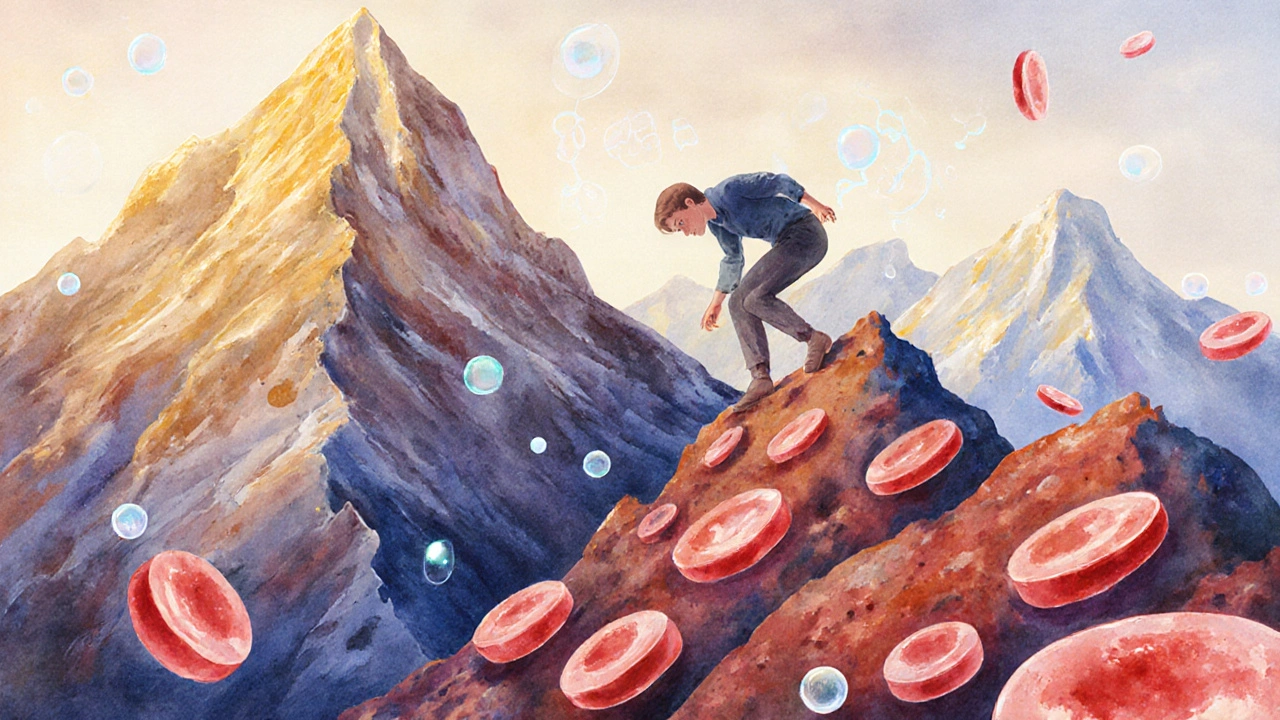Iron‑Rich Diet: The Essential Guide to Boosting Your Health
When working with iron‑rich diet, a dietary plan focused on foods high in elemental iron. Also known as iron‑focused eating, it helps maintain healthy blood levels and supports energy production, you’re actually tackling several linked health concepts. Iron deficiency anemia, a condition caused by insufficient iron intake and low hemoglobin is the most common nutritional disorder worldwide, and the first line of defense is boosting dietary iron. The diet encompasses two main categories of iron: heme iron, the highly absorbable iron found in animal proteins such as red meat, poultry, and fish and non‑heme iron, the plant‑based form present in legumes, leafy greens, and fortified grains. Because non‑heme iron is less readily taken up, you need helpers – and that’s where vitamin C, an ascorbic acid that converts ferric iron to the more absorbable ferrous state steps in. Adding a squeeze of lemon to spinach, a splash of orange juice to lentil soup, or a side of bell peppers with tofu can raise iron absorption by up to 70%. Another powerful tool is iron supplements, concentrated sources of elemental iron such as ferrous sulfate, gluconate, or bisglycinate that fill gaps when diet alone falls short. Monitoring your body’s iron status through ferritin levels and hemoglobin tests lets you fine‑tune the plan, ensuring you avoid both deficiency and overload.
Key Foods, Bioavailability Tricks, and the Body’s Iron Management
The iron‑rich diet shines when you pick the right foods and combine them wisely. Heme iron sources – beef liver, steak, turkey, and shellfish – deliver about 15‑35% absorption without any extra effort. Non‑heme iron foods – lentils (3 mg per half‑cup), chickpeas, quinoa, fortified breakfast cereals, pumpkin seeds, and dark leafy greens like kale and Swiss chard – provide 2‑20% absorption, heavily influenced by meal composition. Cooking in cast‑iron cookware can add an extra 2‑5 mg of iron per serving, a simple hack for anyone who likes stovetop meals. Pairing non‑heme iron with vitamin C, as noted earlier, is the most reliable boost. Conversely, avoid inhibitors like phytates (found in whole grains and legumes), polyphenols (tea, coffee, red wine), and calcium (dairy) during iron‑rich meals; they bind iron and drop absorption rates dramatically. Your body’s iron metabolism regulates uptake through the hormone hepcidin, which rises after meals rich in iron and during inflammation, temporarily reducing absorption – a reason why spread‑out meals work better than one giant iron binge. For athletes or pregnant women, daily iron needs rise to 18 mg and 27 mg respectively, making strategic meal timing and possibly a low‑dose supplement essential. Tracking ferritin (the storage protein) gives a clearer picture than hemoglobin alone; values below 30 ng/mL often signal early depletion even when you feel fine.
Putting this knowledge into practice is easier than it sounds. Start a weekly menu that mixes a heme source – a Thursday grilled salmon or a Saturday beef stir‑fry – with plant‑based staples like a Monday lentil‑spinach stew and a Wednesday quinoa‑pumpkin‑seed bowl. Add vitamin C boosters at each meal: citrus dressing, strawberries, or tomato salsa. If you’re vegan, consider an iron‑bisglycinate supplement taken between meals to bypass hepcidin spikes. Regularly check your ferritin and hemoglobin, especially if you’re prone to heavy periods, chronic illnesses, or intense training. The articles below dive into related topics such as managing chronic conditions, understanding supplement safety, and exploring how nutrition intersects with medication. By the time you scroll through the collection, you’ll have a solid toolbox for crafting an iron‑rich diet that supports energy, immunity, and overall wellbeing.

